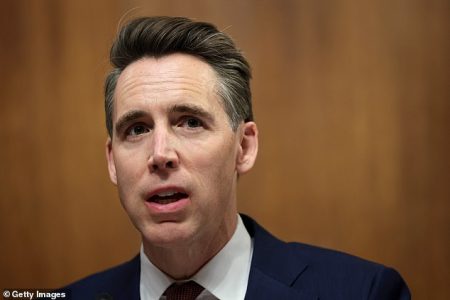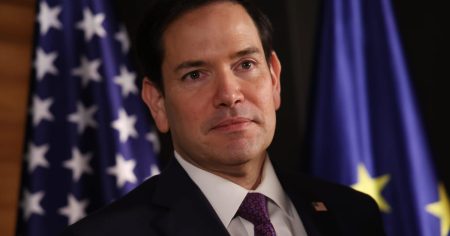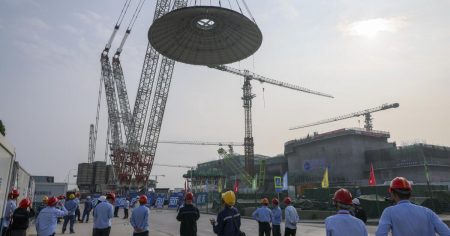The ongoing conflict between Russia and Ukraine has been a focal point of international diplomacy and geopolitical tensions. Recent developments suggest that the situation remains highly volatile, with both sides engaged in military actions and diplomatic efforts. Former U.S. President Donald Trump has repeatedly stated his belief that he can bring a swift end to the war, claiming to have made progress in discussions with Russian President Vladimir Putin. Trump has also emphasized that Putin is eager to see an end to the bloodshed, as the Russian leader allegedly wants to prevent further loss of life. However, Trump’s team acknowledges that achieving peace will require concessions from both sides. This implies that finding a mutually acceptable resolution will be challenging, as both Ukraine and Russia have entrenched positions and interests.
Despite Trump’s optimism, Russia’s actions on the ground tell a different story. In recent weeks, Russian forces have intensified their attacks on Ukraine’s energy infrastructure, deploying large-scale drone strikes. These attacks have targeted critical facilities, exacerbating the humanitarian crisis and disrupting essential services for civilians. Additionally, Russian troops continue to push forward in the Donetsk region, a key area in eastern Ukraine that has been a battleground since the conflict began in 2014. These military advancements suggest that Russia is not currently open to diplomatic overtures, despite the devastation caused by the war. The relentless pursuit of territorial gains indicates that Russia’s strategy remains focused on strengthening its position on the battlefield before considering negotiations.
The rhetoric from Russian officials further underscores the complexities of the situation. Maria Zakharova, a spokesperson for the Russian Foreign Ministry, recently mocked Ukraine’s control over a small area in the Kursk region, which is located in western Russia. In a post on the messaging app Telegram, Zakharova dismissed the scale of Ukraine’s territorial gains, describing them as minuscule—approximately two meters wide and one and a half meters deep. She accused Ukrainian President Volodymyr Zelensky of exaggerating these gains to divert attention from the broader struggles faced by Ukrainian forces. Zakharova’s comments reflect Russia’s efforts to downplay Ukraine’s successes and paint the conflict as a one-sided affair, where Russia holds the upper hand.
The territorial dynamics of the conflict highlight the significant challenges ahead. According to reports, Russian forces have occupied an additional 3,600 square kilometers of Ukrainian territory over the past year, bringing the total area under Russian control to about 20% of Ukraine. This includes large swaths of land in the east and south, where Russian troops have established a formidable presence. In contrast, Ukrainian forces have managed to gain control of a much smaller area—about 500 square kilometers—in the Kursk region of western Russia. While this represents a symbolic victory for Ukraine, it is a far cry from the scale of Russia’s territorial holdings within Ukraine. The disparity underscores the immense difficulty Ukraine faces in reclaiming its occupied lands, even as it continues to receive military and financial support from Western allies.
The ongoing violence and shifting front lines have profound implications for civilians caught in the midst of the conflict. The relentless drone attacks on Ukraine’s energy infrastructure have left millions without heat, electricity, or access to basic services, particularly as winter sets in. Hospitals, schools, and other critical facilities are increasingly vulnerable, and the humanitarian situation continues to deteriorate. At the same time, the advances in the Donetsk region have forced thousands of people to flee their homes, adding to the growing refugee crisis. The human toll of the war is immense, with widespread reports of casualties, displacement, and psychological trauma. Despite the efforts of international aid organizations, the needs far outweigh the available resources, leaving many to suffer in dire conditions.
Amidst the devastation, there are glimmers of hope, though they remain fragile. Diplomatic efforts, while fraught with challenges, continue to be explored behind the scenes. Representatives from various countries, including the United States, have engaged in discussions aimed at finding a pathway to peace. However, given the deep-seated animosity and competing interests, reaching a negotiated settlement remains a distant prospect. The United States and its allies have emphasized their commitment to supporting Ukraine’s defense, while also calling for a peaceful resolution. Nevertheless, the complexities of the conflict, combined with the sharply contrasting narratives from Moscow and Kyiv, suggest that the path to peace will be long and arduous.









